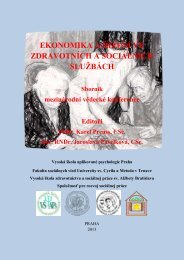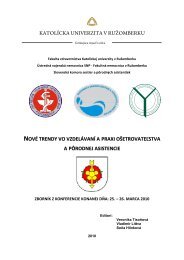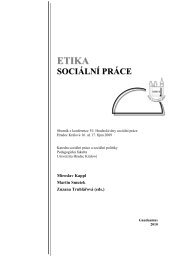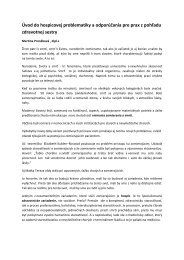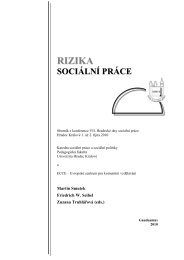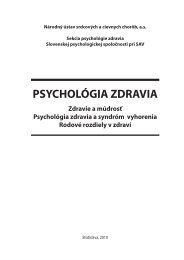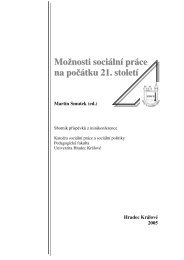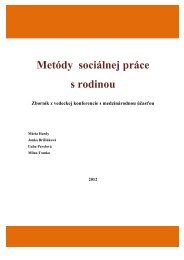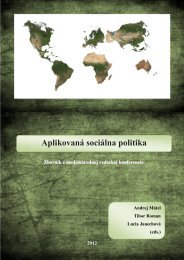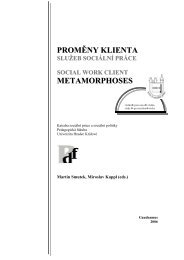Zmena klÃmy â možný dopad (nielen) na obyvateľstvo - Prohuman
Zmena klÃmy â možný dopad (nielen) na obyvateľstvo - Prohuman
Zmena klÃmy â možný dopad (nielen) na obyvateľstvo - Prohuman
You also want an ePaper? Increase the reach of your titles
YUMPU automatically turns print PDFs into web optimized ePapers that Google loves.
Africa where the parasite is present. Changes in climate and other environmental<br />
conditions may alter the distribution of the sandfly (Phlebotomus spp.) host,<br />
potentially increasing the risk of co-infection of HIV patients in new areas. Similarly,<br />
in Chi<strong>na</strong>, infections of schistosomiasis appear to be increasing, after many<br />
years of success with control programs. This may be linked to CC, as distributions<br />
of the s<strong>na</strong>il host of Schistosoma japonicum appear to have moved northward,<br />
correlating with warmer winter temperatures. Evidence suggests that infection<br />
with Schistosoma spp. can also increase the susceptibility and progression of HIV.<br />
There is a considerable overlap of parasitic and other infectious diseases with HIV<br />
in many developing countries, particularly in Africa.<br />
Infections caused by soil-transmitted helminths are the most common infections<br />
in the world and they weaken the body’s resistance to other diseases, yet<br />
little research has been done on the effect of climate sensitivity in them. However,<br />
these organisms have a free-living larval stage, dependent on temperature, rainfall<br />
and soil moisture for survival. Variations in these climatic parameters may thus<br />
allow worms to survive in new areas. The KwaZulu-Natal area of South Africa has<br />
a higher prevalence of hookworm on the coastal plain, attributed to temperature,<br />
soil type and rainfall, but prevalence decreases as altitude increases. This distribution<br />
may alter, if the climate becomes warmer and wetter in the higher areas.<br />
HIV may interact differently in patients with no inherited immunity to helminths<br />
and other pathogens.<br />
The third major pathway which we identify as operant within the HACC is the<br />
most contentious and difficult to demonstrate. This concerns the complex multidirectio<strong>na</strong>l<br />
inter-relationships between CC, poverty, inequality, gover<strong>na</strong>nce, migration,<br />
conflict and other social phenome<strong>na</strong>. We regard this area as an important<br />
topic for ongoing research.<br />
In many developing countries women become infected with HIV at younger<br />
ages than men. The disproportio<strong>na</strong>te lack of education available to women and<br />
girls in many cultures is both a manifestation and powerful contributor to female<br />
vulnerability, including, in some cases, to the acquisition of HIV. In its simplest<br />
form, girls are often removed from school, (especially in developing countries)<br />
to care for sick family members, or to take the role of a deceased or incapacitated<br />
older woman. This lack of education then restricts their future educatio<strong>na</strong>l<br />
and economic prospects. Knowledge about HIV is an important means by which<br />
women can protect themselves from the disease. In contrast, little general education,<br />
especially one in which functio<strong>na</strong>l literacy is not attained, reduces the<br />
capacity for further self-education, including for health education.<br />
59




